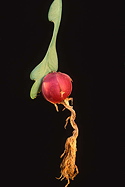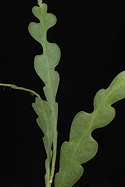A recent molecular study of the genus Disocactus by Mexican cactologists Miguel Angel Cruz, Salvador Arias & Teresa Terrazas (Willdenowia 46 (1): 145 – 164, April, 2016) has resulted in various taxonomic changes including incorporation of three species previously included in Epiphyllum: E. anguliger, E. crenatum and E. lepidocarpum. These relationships are supported not only by the DNA evidence but also by morphological similarities, namely the presence of scales on the pericarpel and the receptacle tube that are larger toward the perianth, as well as flexible spines. In addition hybridization is reported with the related D. ackermannii and D. phyllanthoides. Further, there is overlap in geographical distribution of the group in southern Mexico and Central America. The selection offered here has been in cultivation for some time but deserves wider distribution. This recent revision of Disocactus provides the opportunity to address that and to publicize the name change. The former inclusion in Epiphyllum is due to the similarity of the large white flowers (rather unlike those of other disocacti). The stems of the form offered here are distinctive in having missing lobes from one side of the midvein or the other resulting in unusual asymmetrically lobed branches. This form has proven to be a vigorous and resilient plant (also unlike the more delicate tropical or cloud forest species). It tolerates considerable drought but will be more attractive with at least standard succulent care or slightly lusher growing conditions. The cultivar name is from its place of origin, near the town of Chichicastenango in the highlands NW of Guatemala City. Rooted cuts of HBG 60385, originally received as a cutting in 1988 from Carol Wujcik (who was then on staff at the Huntington) to replace our original accession of this clone (HBG 39384, from Gil Tegelberg) after it froze in our lath house in 1978. $10.

Published in the Cactus and Succulent Journal, Vol. 89 (3), May-June, 2017


